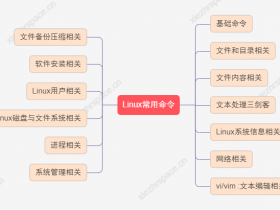- A+
一、安装nginx
安装教程&命令
# 如果centos服务器是最小体量安装,则先安装weget
yum install -y wget
#下载nginx,截至写稿最新是1.18.0
cd /home wget http://nginx.org/download/nginx-1.18.0.tar.gz tar -zxvf nginx-1.18.0.tar.gz cd nginx-1.18.0 #安装依赖
yum install -y pcre pcre-devel openssl openssl-devel gcc gcc gcc-c++ ncurses-devel perl #可选安装步骤
#vim auto/cc/gcc
#在179行这样注释掉 CFLAGS="$CFLAGS -g" 使用:set nu显示行号
#支持ssl
./configure --prefix=/usr/local/nginx --user=www --group=www --with-http_stub_status_module --with-http_ssl_module #编译和安装
make make install #安装成功
#安装目录
cd /usr/local/nginx
二、配置教程
安全地配置nginx,主要是以低权限运行nginx,即使出现漏洞,也无法被反弹shell
2.1 创建用户和组
groupadd nologin useradd nginx-nologin -M -s /sbin/nologin -g nologin #-M 不指定家目录
#-s 指定shell ,nologin代表该用户无法用于登录,但是可以指定以此用户执行命令,详情在后面
#-g 指定组
2.2 获取https证书
这是可选的,如果你还没有域名,则需先购买域名,国内?购买域名还需要备案。
如果你有域名,那么推荐使用https,证书可以免费申请,无需备案。
以阿里云为例,你使用域名申请后,推荐使用文件验证,因为dns验证的话需要等dns传播。验证通过一分钟左右就会审核通过,接着下载证书文件,要下载nginx的。下载后解压重命名为cert.pem和cert.key,传到服务器/usr/local/nginx/conf/目录下。
后续配置中取消掉有关ssl的配置的注释。
2.2 配置nginx.conf
vi /usr/local/nginx/conf/nginx.conf 如果不想麻烦的话可以直接备份原文件,然后使用我下面的配置
#运行用户和组 user nginx-nologin nologin; worker_processes 1; #去掉注释 error_log logs/error.log; #error_log logs/error.log notice; #error_log logs/error.log info; #去掉注释 pid logs/nginx.pid; events { worker_connections 1024; } http { include mime.types; default_type application/octet-stream; log_format main '$remote_addr - $remote_user [$time_local] "$request" ' '$status $body_bytes_sent "$http_referer" ' '"$http_user_agent" "$http_x_forwarded_for"'; access_log logs/access.log main; sendfile on; #tcp_nopush on; #keepalive_timeout 0; keepalive_timeout 65; #gzip on; server { #使用8800,非root用户无法使用1024以下端口,后续使用防火墙转发流量 listen 8800; server_name localhost; #charset koi8-r; ###强制http转https #return 301 https://blog.yunmuq.xyz:4433; #access_log logs/host.access.log main; location / { root html; index index.html index.htm; } error_page 404 /404.html; # redirect server error pages to the static page /50x.html # error_page 500 502 503 504 /50x.html; location = /50x.html { root html; } # proxy the PHP scripts to Apache listening on 127.0.0.1:80 # #location ~ .php$ { # proxy_pass http://127.0.0.1; #} # pass the PHP scripts to FastCGI server listening on 127.0.0.1:9000 # #location ~ .php$ { # root html; # fastcgi_pass 127.0.0.1:9000; # fastcgi_index index.php; # fastcgi_param SCRIPT_FILENAME /scripts$fastcgi_script_name; # include fastcgi_params; #} # deny access to .htaccess files, if Apache's document root # concurs with nginx's one # #location ~ /.ht { # deny all; #} } # another virtual host using mix of IP-, name-, and port-based configuration # #server { # listen 8000; # listen somename:8080; # server_name somename alias another.alias; # location / { # root html; # index index.html index.htm; # } #} ###流量控制,没有https也可以用在http #开辟10m内存存储相关信息,访问频率限制为一秒3次,访问频率超过会返回500状态码 #limit_req_zone $binary_remote_addr zone=mylimit:10m rate=3r/s; # HTTPS server # #server { # listen 4433 ssl; # server_name localhost; #流量控制 #继承上面的配置,并且新增一个缓冲区能缓存2次请求 #limit_req zone=mylimit burst=2; # ssl_certificate cert.pem; # ssl_certificate_key cert.key; # ssl_session_cache shared:SSL:1m; # ssl_session_timeout 5m; # ssl_ciphers HIGH:!aNULL:!MD5; # ssl_prefer_server_ciphers on; # location / { # root html; # index index.html index.htm; # } # error_page 404 /404.html; ### 497错误即400状态码中的,错误地使用http协议请求https端口 # error_page 497 /400.html; # redirect server error pages to the static page /50x.html # # error_page 500 502 503 504 /50x.html; # location = /50x.html { # root html; # } #} } 2.3 配置防火墙
如果是最小安装,没有防火墙的话,还需要安装防火墙
可以运行命令检测是否安装
iptables firewalld #centos7默认 如果两个都报错找不到命令的话需要安装,推荐firewalld
yum install -y firewalld systemctl enable firewalld #开机启动 systemctl start firewalld #启动 接下来是防火墙配置
#开放端口
firewall-cmd --zone=public --add-port=80/tcp --permanent firewall-cmd --zone=public --add-port=443/tcp --permanent #流量转发
firewall-cmd --add-forward-port=port=80:proto=tcp:toport=8800 --permanent firewall-cmd --add-forward-port=port=443:proto=tcp:toport=4433--permanent #配置立即生效
firewall-cmd --reload
2.4 配置文件权限
这是最后一步,推荐把这些命令存为sh文件,并设置权限755,因为改动文件时可能需要重复执行。
chown -R nginx-nologin:nologin /usr/local/nginx chmod -R 755 /usr/local/nginx 三、启动nginx
一切准备就绪,现在可以启动,推荐把启动命令保存为sh文件,并设置权限755
这里演示了nologin用户如何执行命令
首次启动:
#su即使用另一个用户执行命令,-s指定了shell,-c是命令内容 #nginx -c是检查配置是否正确 su -s /bin/bash -c "/usr/local/nginx/sbin/nginx -c /usr/local/nginx/conf/nginx.conf" nginx-nologin #-s reload用于运行时重载配置文件无需停止,也可以用于启动 su -s /bin/bash -c "/usr/local/nginx/sbin/nginx -s reload" nginx-nologin 如果要停止,可以使用
su -s /bin/bash -c "/usr/local/nginx/sbin/nginx -s quit" nginx-nologin 



